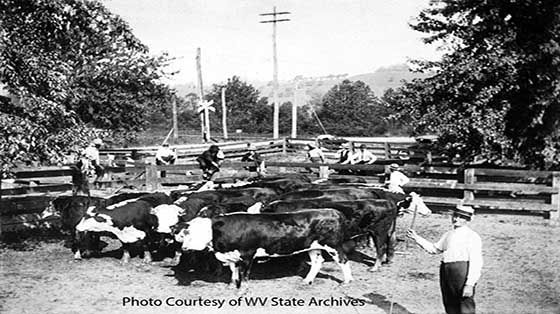In 1890, West Virginia boasted 73,000 farms. However, the agriculture community was plagued with plant and animal disease. That led to the founding of the 1891 State Board of Agriculture. The State Legislature decided to tackle the problems facing agriculture in 1911 by creating the framework for the West Virginia Department of Agriculture. Howard E. Williams was elected the first West Virginia Commissioner of Agriculture. He served from 1913-1917. His salary was $4,000 a year.
The West Virginia Department of Agriculture formed a partnership with the United States Department of Agriculture (USDA) and National Agriculture Statistics Service (NASS) in 1915. That same year NASS reported West Virginia farmers produced 2.6 million bushels of oats, 1 million bushels of wheat, 2.5 million barrels of apples, 535,000 bushels of peaches and $21 million worth of corn.

Farming peaked in 1935 with 97,000 farms and declined starting in the 1920’s because more and more people were moving to the cities to find industrial jobs.
The Pesticide Control Act, originally passed in 1975, was revised in 1990 and is considered a major piece of legislation impacting the WVDA. It allows for the training, certification and licensing of pesticide applicators and requires pesticide manufacturers to register products before they could be sold in West Virginia.
As of 2018, 20,400 farms were located in West Virginia totaling 3.6 million acres. Ninety-eight percent of those are considered small farms. West Virginia farmers raised 86.1 million broilers, harvested 6,600 tons of peaches, sold $18.1 million worth of apples and cut 1.07 million tons of hay.
While we have fewer “professional” farmers than many surrounding states, more and more West Virginians are planting their own gardens, building high tunnels and shopping at farmers' markets for fresh produce, dairy and meat, a trend that’s expected to continue. The WVDA continues to expand to meet the changing face of agriculture.
